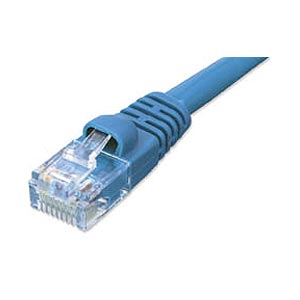
Networking is done. The way you have done things before is finished. The writing has been on the wall for quite a while now. But it’s going to be a good thing.
The Old Standard
Networking purchase models look much different today than they have in the past. Enterprises no longer buy a switch or a router. Instead, they buy solution packages. The minimum purchase unit is a networking pod or rack. Perhaps your proof-of-concept minimum is a leaf-spine of no less than 3 switches. Firewalls are purchased in pairs. Nowhere in networking is something simple any longer.
With the advent of software, even the deployment of these devices is different. Automation and orchestration systems provide provisioning as the devices are brought online. Network Monitoring Systems ensure the devices are operating correctly via API call instead of relying on SNMP. Analytics and telemetry systems can pull statistics on the fly and create datasets that give you insight into all manner of network traffic. The intelligence built into the platform supporting the hardware is more apparent than ever before.
Networking is no longer about fast connectivity speed. Instead, networking is about stability. Providing a transport network that stays healthy instead of growing by leaps and bounds every few years. Organizations looking to model their IT departments after service providers and cloud providers care more about having a reliable system than the most cutting edge technology.
This is nothing new in IT. Both storage and virtualization have moved in this direction for a while. Hardware wizardry has been replaced by software intelligence. Custom hardware is now merchant-based and easy to replace and build. The expertise in deployment and operations has more to do with integration and architecture than in simple day-to-day setup.
The New Normal
Where does that leave networkers? Are we a dying breed, soon to join the Unix admins of the word and telco experts on a beach in retirement? The reality is that things aren’t as dire for us as one might believe.
It is true that we have shifted our thinking away from operations and more toward system building. Rather than worry if the switch ports have been provisioned, we instead look at creating resilient constructs that can survive outages and traffic spikes. Networks are becoming the utility service we’ve always hoped they would be.
This is not the end. It’s the beginning. As networks join storage and compute as utilities in the data center, the responsibilities for our sphere of wizardry are significantly reduced. Rather than spending our time solving crazy user or developer problems, we can instead focus on the key points of stability and availability.
This is going to be a huge shift for the consumers of IT as well. As cloud models have already shown us, people really want to get their IT on their schedules. They want to “buy” storage and networking when it’s needed without interruption. Creating a utility resource is the best way to accomplish that. No longer will the blame for delays be laid at the feet of IT.
But at the same time, the safety net of IT will be gone as well. Unlike Chief Engineer Scott, IT can’t save the day when a developer needs to solve a problem outside of their development environment. Things like First Hop Reachability Protocols (FHRP), multipathing, and even vMotion contribute to bad developer behavior. Without these being available in a utility IT setup, application writers are going to have to solve their own problems with their own tools. While the network team will end up being leaner and smarter, it’s going to make everything run much more smoothly.
Tom’s Take
I live for the day when networking is no different than the electrical grid. I would rather have a “dumb” network that provides connectivity rather than hoping against hope that my “smart” network has all the tricks it needs to solve everyone’s problem. When the simplicity of the network is the feature and we don’t solve problems outside the application stack, stability and reliability will rule the day.


You mention NMSs that use APIs. Can you list some that do that? I have been struggling to find any that don’t rely on SNMP. I suspect I’m just looking in the wrong places.
Pingback: The Network Does Too Much | The Networking Nerd